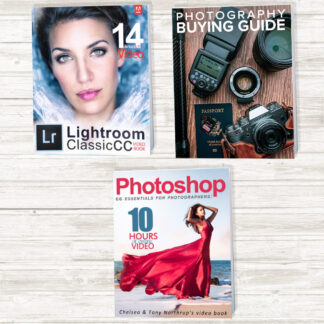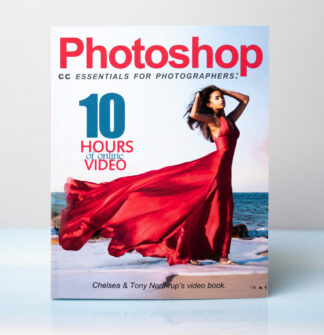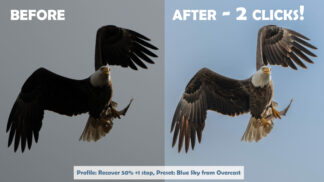Zoom lenses can change their focal length. Zooming out feels like moving away from a subject, showing you a more wide-angle perspective and allowing you to see more of the background. Zooming in feels like moving towards a subject, showing you a more telephoto perspective and hiding more of the background. Prime lenses have a single, fixed focal length. If you want to make your subject larger in the frame, you need to either change lenses or move closer to your subject. The reality is, zoom lenses give you more options. If you use primes and you’re doing travel photography, you might pack 14mm, 35mm, and 50mm lenses. What happens when the best framing for a shot requires 24mm? Zooms allow you to pick the perfect focal length. Also, zooming to change focal length allows you to control the background, something you can’t do when you move closer to or farther from your subject. For more information about how you can use zoom lenses to control the background in your pictures, refer to Chapter 2 in Stunning Digital Photography. Zooming also changes the proportions of your subject. This is critical in portraiture, where using a wide-angle lens gives your subject cartoonishly large features, while using a telephoto lens gives your subject smaller, more flattering features. For detailed information, refer to Chapter 6 in Stunning Digital Photography. Of course, you can change your focal length using prime lenses—but you have to change the entire lens. That also means that you need to carry multiple lenses with you. Prime lenses do have several key advantages, though:
- They are smaller and lighter than zooms.
- They tend to be “faster,” which means they have a smaller minimum f/stop number, providing faster focusing, faster shutter speeds, and nicer background blur.
- They tend to be much sharper than zooms at a similar price.
I think everyone’s general-purpose lens should be a zoom. However, all camera manufacturers make an excellent and inexpensive 50mm f/1.8 prime lens, often known as the “nifty fifty” or “fantastic plastic.” That’s the lens I’d grab if I needed to take pictures in a dimly lit environment, such as a bar, without a flash. While my professional portrait lens recommendation is a 70-200 f/2.8, they start at around $760. You can achieve a similar effect using the much less expensive 85mm f/1.8, which starts at less than half the price of the zoom. Ultimately, zoom lenses are superior for casual and candid amateur pictures and fast-paced professional work (such as weddings). Prime lenses are better for carefully planned photos. Prime lenses are also the best choice for low-light and action photos, such as concerts, wildlife, and some sports, because the prime lenses tend to let in far more light.
Different Types of Zooming
Zoom lenses change focal length in three different ways:
- Circular zoom. Turn a ring on the lens clockwise or counter-clockwise to mechanically adjust the lens’ optical elements. This is the most common method of zooming, and in my opinion, it’s by far the best.
- Push-pull zoom. Some telephoto lenses, such as the Canon 100-400mm L IS, are push-pull zooms. Instead of turning a ring to zoom, you push the lens in and out. This allows you to zoom and manually focus at the same time. It takes a little getting used to, but it works fine.
- Power zoom. With power zooming (also known as motorized zooming), the zooming is controlled by a motor in the lens. Power zooming is standard on P&S cameras and a common feature on mirrorless lenses, but it’s uncommon on DSLRs. Power zooming is slower than other types of zooming, which makes it less than ideal for photography. However, the smooth motion of power zooming makes it an excellent choice for video. Power zooming can also allow for one-handed operation.





